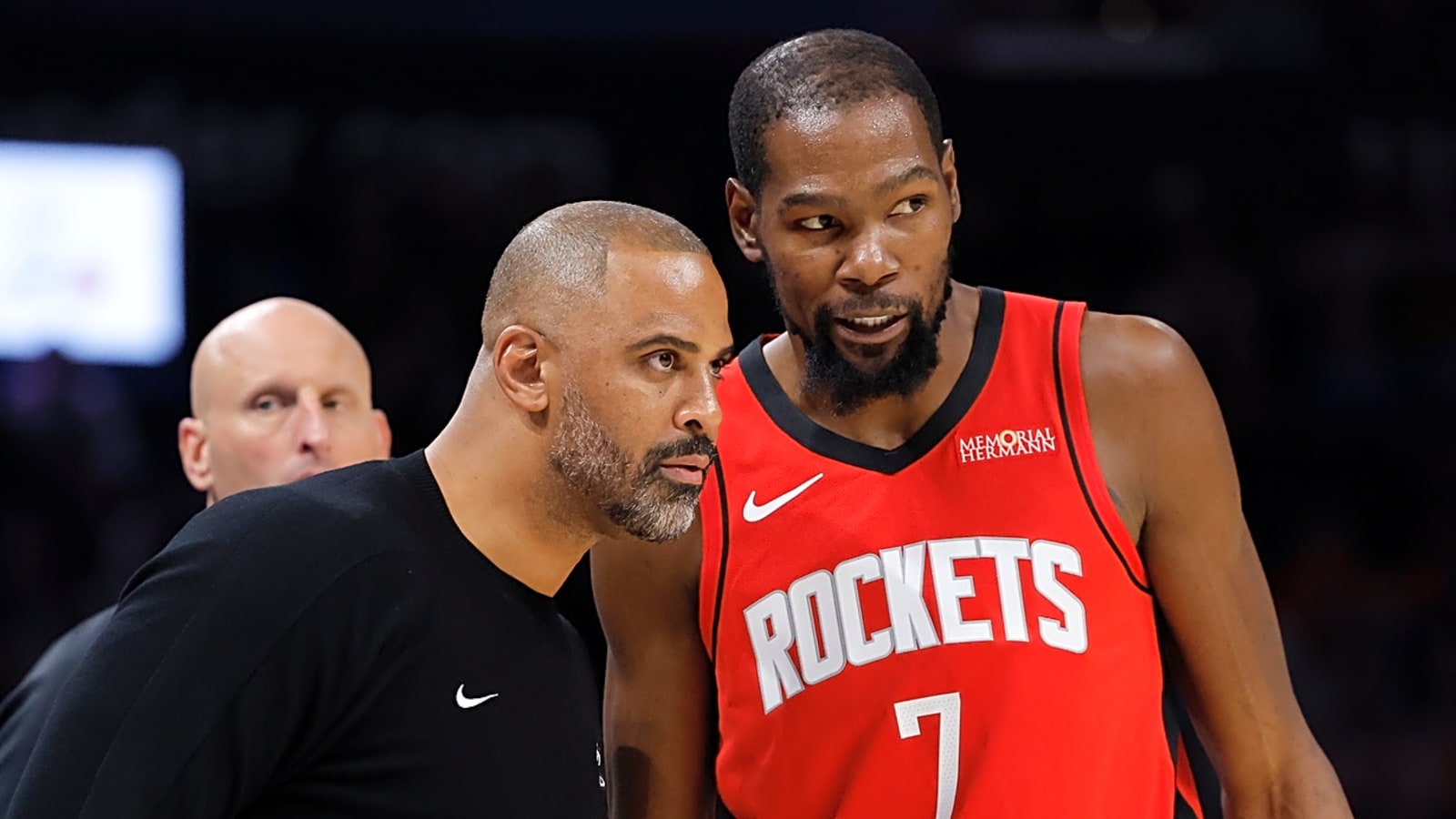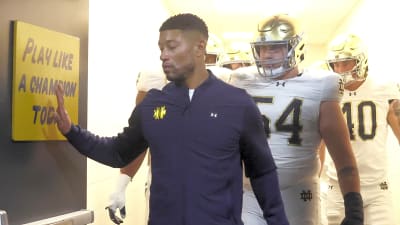
Houston, the Rockets have a starting lineup problem
The Houston Rockets opened the 2025–26 season Tuesday night against the defending champion Oklahoma City Thunder with more to prove than any other team in the West. Houston fell to the Thunder, 125-124, in double overtime.
Ime Udoka’s young team needs to demonstrate that last season's improvement can develop into a championship. Instead of focusing on the balance and pace that drove last year’s success, Houston plans to introduce a jumbo lineup that nearly resembles parody.
Hold up, was that Amen Thompson (6-foot-7) playing point guard? And did we see Kevin Durant (6-foot-11) at shooting guard? Jabari Smith Jr., Alperen Sengun and Steven Adams completed a front line of similarly sized 6-foot-11 big men. The NBA hasn't seen this kind of experimentation for a reason. It doesn't, and it likely won't, work.
The Rockets' illusion of size
On paper, Udoka’s "size as a weapon" philosophy offers a strong argument. Oklahoma City finished last season near the bottom in defensive rebounding. In theory, dominating the boards against Chet Holmgren and Isaiah Hartenstein could shift the odds in Houston’s favor. But as a long-term starting five, how does the offense operate effectively?
How do you handle spacing when Thompson and Adams share the floor? That puts a lot of pressure on Sengun’s playmaking brilliance. The Rockets' star big man performs best from the elbow and low post, where he can use his footwork and passing to manipulate defenses. However, with two non-shooters nearby and Durant forced to act as a perimeter decoy, the team risks disrupting their half-court system. They're too big to fast-break effectively, but they tend to miss too many shots to succeed in the half-court.
This isn’t 1999. Length alone no longer determines dominance. The NBA’s top teams of the past three seasons — the Thunder, Boston Celtics and Denver Nuggets — excel through space, pace and decision-making flow. Houston’s lineup does the opposite: it shrinks the floor and clogs the lanes for its most creative player.
Trust the point guard, not the project
Reed Sheppard’s preseason was promising. In the Rockets' final game against Atlanta, he scored 29 points, handed out six assists and contributed seven combined steals and blocks in 29 minutes. Sheppard skillfully manipulated defenses by using hesitations and angles to create passing lanes and delivered crosscourt passes to open shooters. He managed all this without dribbling excessively. Sheppard's ability to read the game and react was clear in a single play against the Hawks: he stripped Trae Young, finished through contact and instantly turned defense into offense.
Throughout the preseason, Sheppard shot over 50% from the field and 40% from three-point range, demonstrating a willingness to take shots he previously avoided. On Tuesday, he stayed aggressive against the Thunder's elite ball pressure, finishing with nine points, four assists and only two turnovers on 3-of-11 shooting.
Sheppard is aware of the criticism and has worked to be more than just a spot-up shooter. The criticism against him has been his perceived defensive weaknesses. That likely explains why Udoka has kept him out of the starting lineup. That said, in the preseason and on Tuesday night, his quick hands created fast-break opportunities. While he can still be outmuscled, his awareness and competitiveness often compensate for those gaps.
The Rockets possess one of the best defensive rotations in the NBA. Any combination of their players can help hide most of Sheppard's shortcomings on rotations and off-ball screens. Not every team can hide a weak defender, but the Rockets can. Starting Sheppard over Thompson at the point would give the Rockets better spacing and tempo, not to mention balance out the team's wing depth.
Udoka’s vision is clear: dominate physically, grind teams down, out-rebound everyone and control the paint. In 2025, spacing is crucial. The coach must trust their best guard and let the game follow his reads.
More must-reads:
- Rockets' Kevin Durant trolls Thunder fans in return to Oklahoma City
- Rockets debut 'tall ball,' but will it be enough to secure Kevin Durant another title?
- The 'Most 2,000-point NBA seasons' quiz
Breaking News
Trending News
Customize Your Newsletter
 +
+
Get the latest news and rumors, customized to your favorite sports and teams. Emailed daily. Always free!








